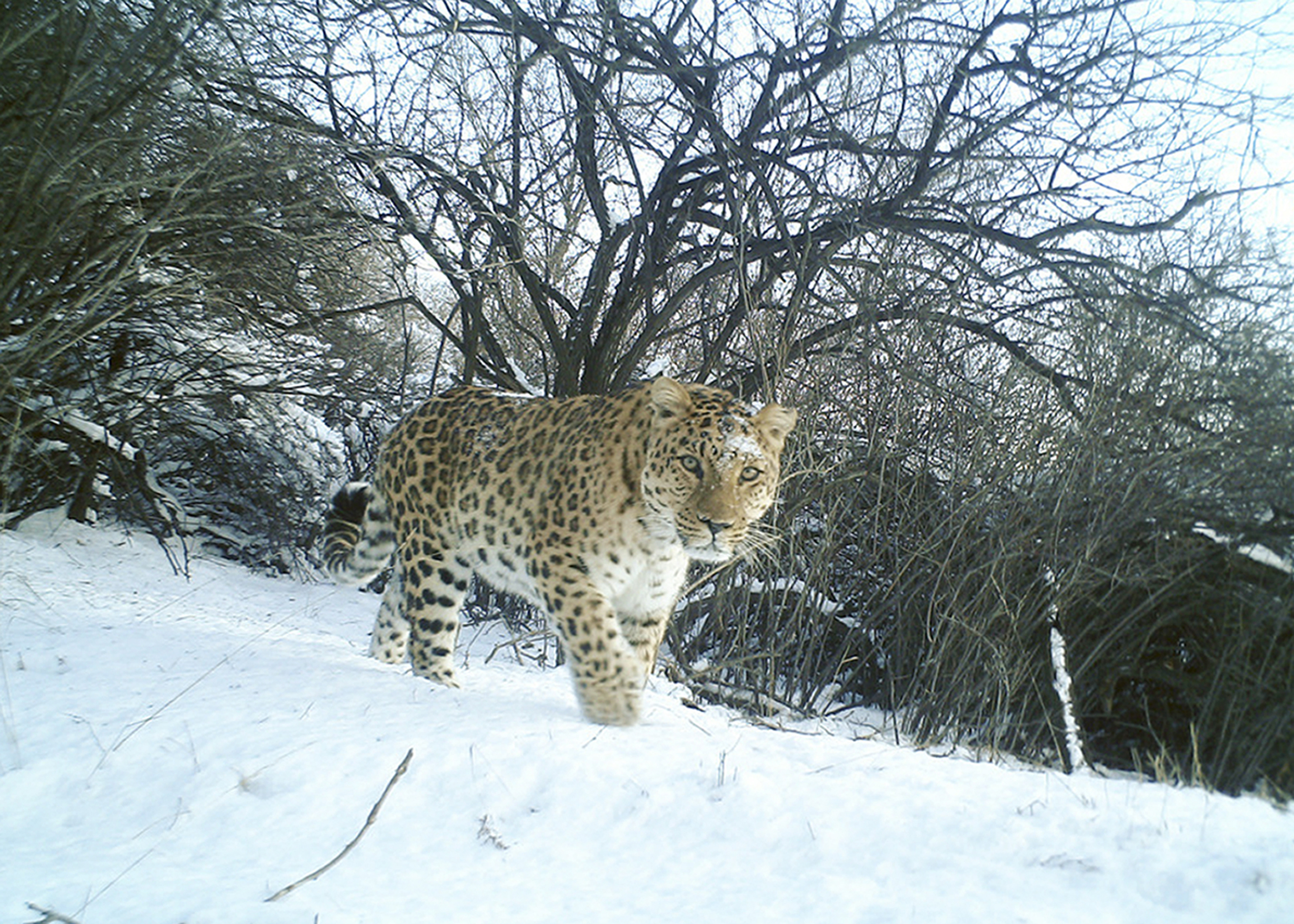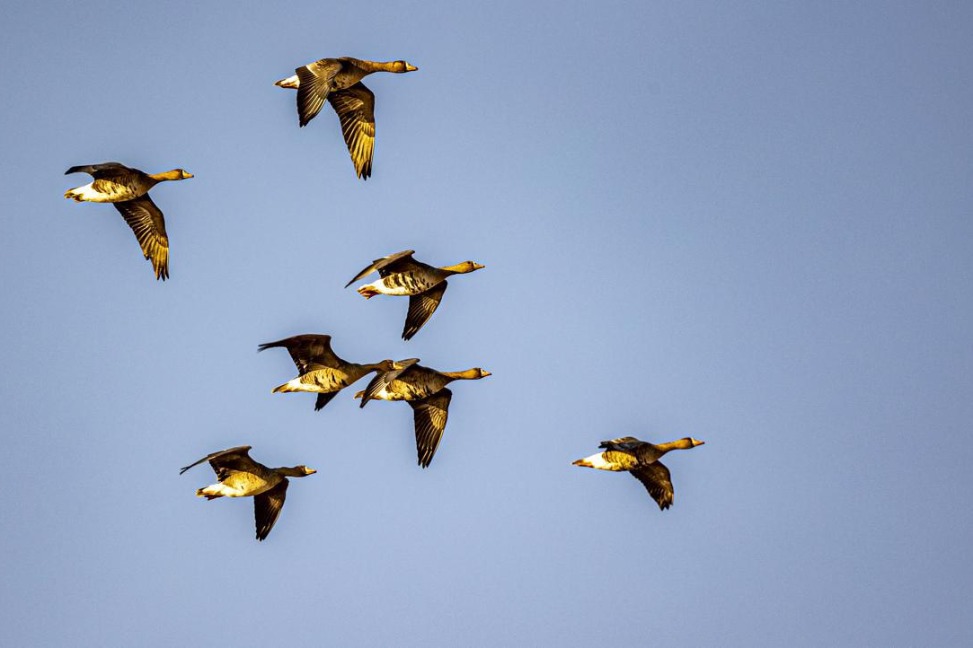Rare leopards reappearing in habitats near Beijing


TAIYUAN-North China leopards, once on the edge of extinction, have been spotted again in their traditional mountainous habitats near Beijing after more than two decades, according to wildlife protection groups.
It is a clear sign that the population of the rare subspecies of leopard has continued to grow as the environment in the region has improved.
The leopard, also known as the Chinese leopard, is classified as a national first-class protected animal in China. It was once widely distributed in Beijing, the provinces of Hebei and Shanxi and other parts of North China.
However, in the second half of the 20th century, deforestation and rampant illegal hunting led to a sharp decrease in its numbers.
By 2008, the population had been reduced to fewer than 500, while their habitat area was estimated to have declined by 80 percent.
Since November 2012, the endangered leopard has been repeatedly spotted in its traditional habitats in Hebei province-Xiaowutai Mountain and Tuoliang-thanks to conservation efforts in the region.
Most recently, a North China leopard was spotted in Hebei Tuoliang National Nature Reserve on Aug 20, according to Huang Qiaowen of the Chinese Felid Conservation Alliance, a nonprofit organization specializing in the protection of wildcats in China.
"Twenty years ago, these big cats almost vanished in the mountains near Beijing. Now, they have found their way back. This is really good news," said Song Dazhao, former chairman of the CFCA.
The expansion of forests is the main reason for the increase in the North China leopard's population, said Yang Xiaodong, chairman of an animal protection association in Heshun county, Shanxi, who has 21 years' experience in wildlife protection.
The Taihang Mountains, which sit across Beijing, Hebei, Shanxi and Henan province, used to be the traditional habitat of the leopard.
Since the launch of an afforestation project in Taihang in 1994, over 7.3 million hectares have been brought under green cover, with the forest coverage rate increasing from 11 percent to 22.4 percent.
"The project has improved the living environment of the North China leopards and has reduced the impact of human activities on them," Yang said.
Last year, an infrared camera captured a female North China leopard wandering with two cubs in the forest of Heshun. It was the fourth time that evidence of leopards breeding had been recorded in Heshun since 2018. Over the past two years, 15 leopard cubs have been spotted in the forest.
"In just one year, we identified 44 North China leopards in Heshun, which showed that the population of the species in the region has reached a satisfactory level," Huang said.
Experts believe that wildlife conservation measures being implemented by local governments, companies and organizations will provide the leopards with a more favorable living environment.
The Heshun government has launched a special fund to offer farmers compensation of 1,000 to 2,000 yuan ($150 to $300) for each livestock animal killed by a North China leopard. The move is expected to reduce retaliation against the leopards.
The government has also built animal passages and modified the planned routes of some highway projects to minimize their impact on nature reserves.
Chinese financial technology firm Ant Group and the Beijing-based Society of Entrepreneurs and Ecology Foundation, among others, have participated in the establishment of a North China leopard reserve while promoting monitoring, anti-poaching and compensation efforts.
Xinhua
- China accelerates cultivation of elite talents in AI, integrated circuits
- East China conference pools Maritime Silk Road development wisdom
- Mainland warns DPP against sacrificing Taiwan interests for US favor
- Chinese vice-premier calls for applying Green Rural Revival Program experience to advance rural revitalization
- Mayors, city planners explore Nanjing
- New center in Shanghai targets medical tourism





































